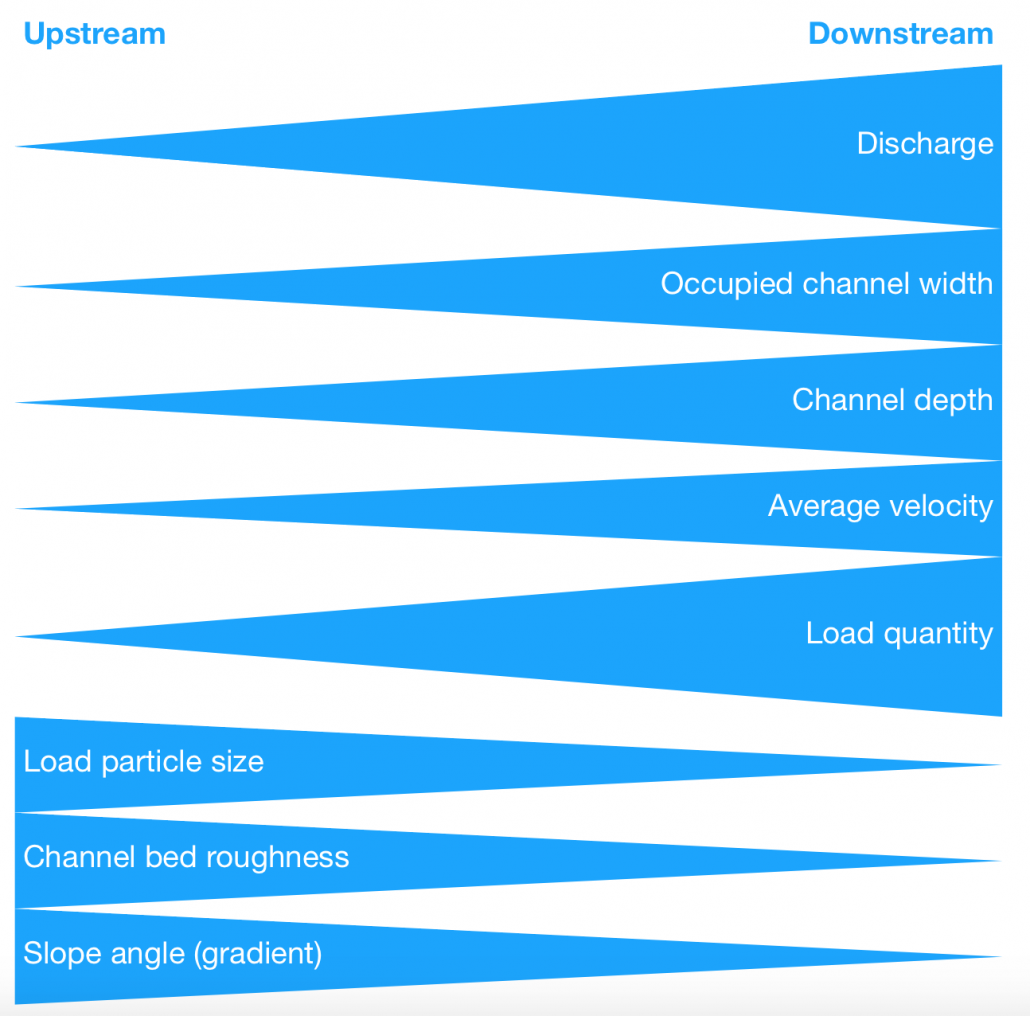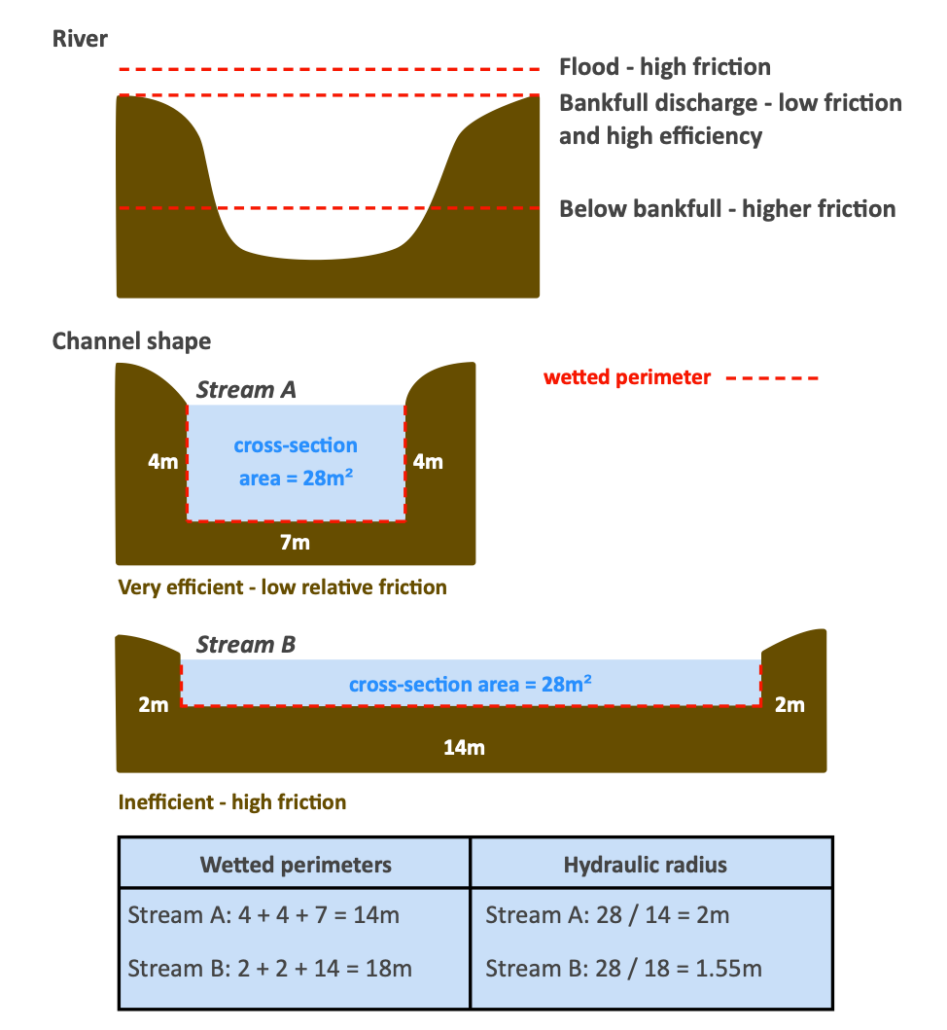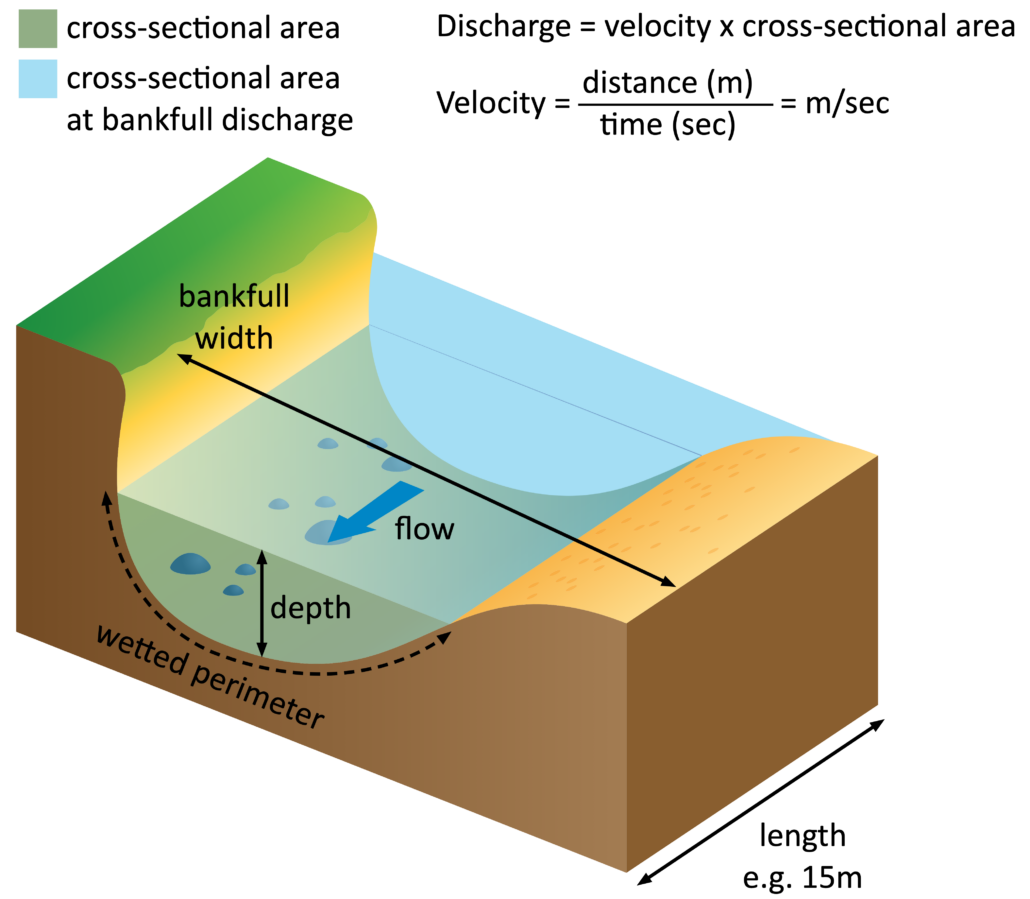What are the characteristics of rivers?
Changing-channel characteristics
Downstream changes
Rivers perform three key tasks: they wear away their channels, carry materials, and form new landscapes through erosion and deposition. Typically, rivers have three sections — a zone of erosion, a zone of transportation, and a zone of deposition where materials. While all sections of a river experience erosion, transport, and deposition, one is usually more dominant than the others. For instance, the upper part mainly experiences erosion, while the lower course mostly experiences deposition. This is because as you move from the source to the mouth of a river, factors like speed, volume, and the amount of materials carried tend to increase. However, the slope becomes gentler, and the size of the materials transported decreases. The diagram below shows changes in a river from source to mouth.

The Bradshaw Model illustrates the typical changes in a river from its source (upstream) to its mouth (downstream)
River Energy
The energy in a river dictates its capacity to erode, transport, or deposit material. This energy is split into:
- Potential Energy: Arising from the water’s weight and height.
- Kinetic Energy: Generated by gravity and the water’s movement. Around 95% of a river’s energy combats friction against the riverbed and banks. More energy is lost in rough channels due to friction, whereas smooth channels retain most of their energy for transporting materials.
Channel Shape
A stream’s efficiency is gauged by its hydraulic radius, which is the channel’s cross-sectional area divided by its wetted perimeter. A higher ratio indicates a more efficient stream with less frictional loss. The most efficient shape is semi-circular.
Factors like depth, width, channel roughness, and hydraulic geometry influence the water’s velocity and discharge in the channel. The width-to-depth (w/d) ratio offers a solid benchmark. Additionally, the channel’s shape is influenced by its material and river dynamics. Solid rock results in slow alterations, while channels made of alluvium can change quickly. Channels of silt and clay tend to be narrow and deep due to the cohesive nature of the fine material, while those of sand and gravel are wider and shallower.
Channel Roughness
The irregularities in the riverbed, like boulders, vegetation, and the interaction between water and the river’s sides and bed, cause friction, which affects the water’s speed. The term ‘discharge’ refers to the water volume flowing past a point in a specific time, usually stated in m^3/sec or cumecs (see diagram below). This is determined by multiplying the cross-sectional area by the average velocity. Generally, steeper inclines lead to faster water speeds because gravity plays a more significant role. Downstream, while discharge, width, depth, and speed typically increase, channel roughness diminishes. A notable trend is that the growth in channel width downstream usually surpasses the increase in depth. Larger rivers have a higher w/d ratio and are more efficient since less energy combats friction. This efficiency boosts the river’s carrying capacity and means a lesser slope can transport the same material. Even if river slopes lessen downstream, the transported material tends to be finer and easier to move.
Summary
Flashcards
Coming soon
Check Your Knowledge
Coming soon


